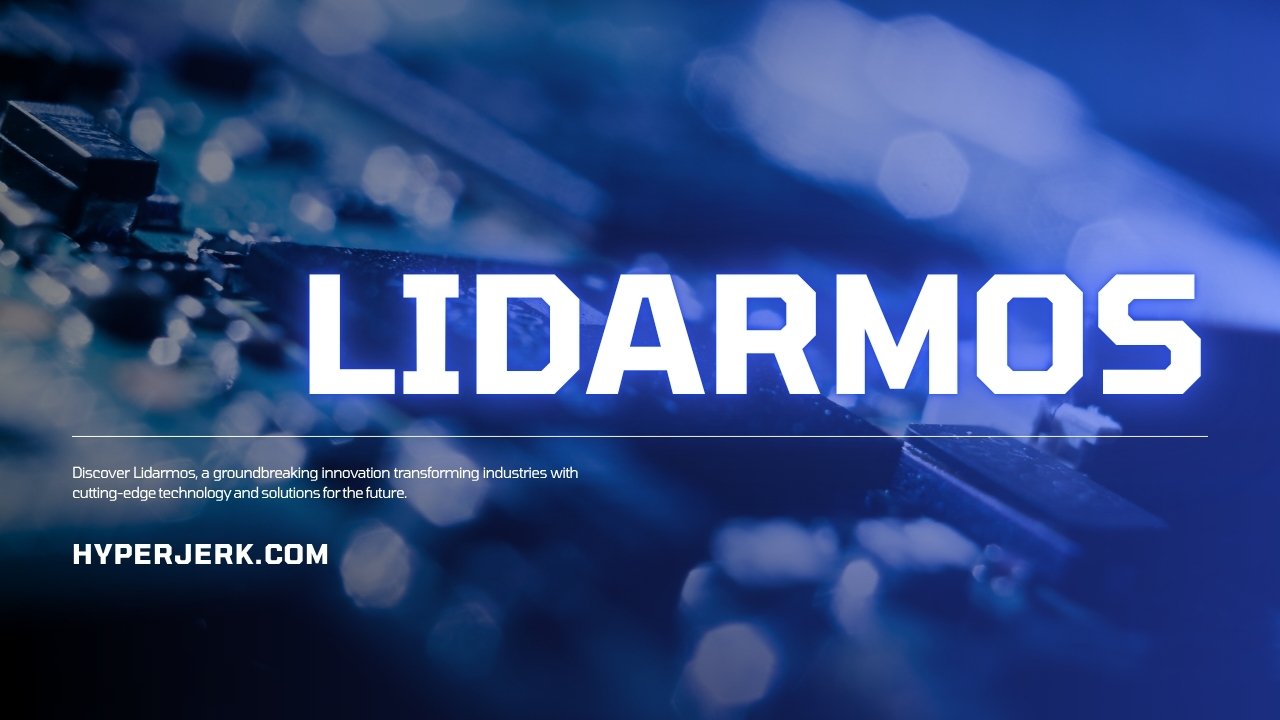In today’s rapidly evolving tech world, Lidarmos has emerged as a groundbreaking advancement in Lidar (Light Detection and Ranging) technology. It’s changing how we perceive, map, and interact with our physical world. Whether it’s enabling self-driving cars or helping drones map terrains, Lidarmos represents a leap into the next generation of precision sensing.
What Is Lidarmos?
Lidarmos is an advanced form of Lidar that combines traditional laser-based sensing with AI-powered data processing. It measures distances using laser pulses and generates detailed 3D models of environments. However, Lidarmos goes beyond — it integrates real-time analytics, machine learning, and smart connectivity, making it faster and more accurate than ever before.
The Origin and Evolution of Lidar Technology
The roots of Lidar stretch back to the 1960s when scientists used laser pulses for atmospheric measurements. Over the decades, it evolved into a vital tool for mapping, surveying, and autonomous navigation. Lidarmos represents the latest evolution — an intelligent, networked system designed for speed, precision, and adaptability.
Why Lidarmos Matters Today
As industries shift toward automation and sustainability, precise environmental sensing becomes crucial. Lidarmos technology supports smart cities, self-driving vehicles, and climate monitoring, making it essential for a data-driven future.
Understanding the Core of Lidar Technology
How Lidar Works
At its heart, Lidar (and by extension, Lidarmos) operates through three main stages:
Emission of Laser Pulses
A device emits thousands of laser beams per second, which travel outward until they hit an object.
Reflection and Detection
These pulses bounce back to the sensor, allowing it to calculate distance based on the time of flight.
Data Processing and 3D Modeling
The system processes millions of data points to generate accurate 3D visualizations of the environment.
Components of a Lidarmos System
A typical Lidarmos system includes:
-
Laser emitter
-
Photodetector
-
GPS and IMU sensors
-
Data processing unit (AI-enhanced)
-
Cloud or edge connectivity
The Evolution from Lidar to Lidarmos
Traditional Lidar vs. Modern Lidarmos
While traditional Lidar provided raw data, Lidarmos processes it instantly using AI. The result? Smarter, real-time decision-making for machines and humans alike.
Technological Innovations Behind Lidarmos
-
Solid-state sensors for durability
-
Compact design for portable devices
-
AI algorithms for pattern recognition
-
Cloud-based processing for scalable data use
Integration with Artificial Intelligence (AI) and IoT
Lidarmos systems connect seamlessly with Internet of Things (IoT) networks and use AI to interpret patterns, predict changes, and respond autonomously — perfect for drones, cars, and smart infrastructure.
Applications of Lidarmos
Autonomous Vehicles
Enhancing Navigation and Safety
Self-driving cars depend on Lidarmos for 360° environmental awareness, detecting objects, pedestrians, and road signs even in poor lighting or weather.
Drone Mapping and Surveying
Lidarmos-equipped drones capture high-resolution terrain maps for construction, mining, and forestry with unmatched accuracy.
Environmental Monitoring
From tracking deforestation to studying air quality, Lidarmos plays a key role in sustainable environmental science.
Smart Cities and Infrastructure
Urban planners use Lidarmos for 3D city modeling, traffic management, and infrastructure maintenance, optimizing city operations efficiently.
Industrial and Agricultural Uses
In agriculture, Lidarmos helps monitor crop growth, analyze soil conditions, and optimize irrigation systems — ushering in the era of precision farming.
Benefits of Lidarmos Technology
High Precision and Accuracy
Lidarmos systems can detect objects down to millimeter-level precision — essential for autonomous mobility and scientific research.
Real-Time Data Collection
Instant processing allows decision-making in milliseconds, critical for dynamic environments like highways or disaster zones.
Cost-Effectiveness and Efficiency
As components become smaller and cheaper, Lidarmos offers greater ROI compared to older, bulkier Lidar systems.
Scalability and Flexibility
Lidarmos fits diverse applications — from handheld devices to satellites — making it a universally adaptable technology.
Challenges Facing Lidarmos Development
Cost and Accessibility
Though more affordable than before, high-end Lidarmos systems remain expensive for small-scale users.
Environmental Limitations
Heavy fog, rain, or reflective surfaces can distort laser readings, reducing system accuracy.
Data Storage and Processing Concerns
With terabytes of data generated daily, managing storage and processing efficiently poses an ongoing challenge.
Future of Lidarmos
The Role of AI and Machine Learning
Future Lidarmos systems will use deep learning to self-correct errors, predict motion, and optimize mapping accuracy in real time.
Global Adoption and Market Trends
With demand rising in automotive, defense, and infrastructure industries, Lidarmos is projected to become a multi-billion-dollar market by 2030.
Sustainability and Green Tech Integration
Eco-friendly Lidarmos devices use energy-efficient lasers and recyclable materials, aligning with global sustainability goals.
Conclusion
Lidarmos isn’t just another technological buzzword — it’s the future of perception and precision. From powering autonomous cars to monitoring our planet’s ecosystems, this cutting-edge technology bridges the gap between the physical and digital worlds. As innovation accelerates, Lidarmos will continue to shape industries, making our world smarter, safer, and more connected.
FAQs
1. What makes Lidarmos different from traditional Lidar?
Lidarmos uses AI-powered processing and real-time analytics, providing faster and more accurate 3D mapping compared to traditional Lidar systems.
2. Can Lidarmos be used in personal devices?
Yes, miniaturized Lidarmos sensors are being developed for smartphones, AR glasses, and home automation devices.
3. Is Lidarmos technology safe for the environment?
Absolutely. Lidarmos uses low-energy lasers and eco-friendly components that pose no harm to humans or wildlife.
4. Which industries benefit most from Lidarmos?
Automotive, agriculture, construction, defense, and environmental monitoring are leading sectors using Lidarmos.
5. What does the future hold for Lidarmos?
Expect to see Lidarmos integrated into more consumer devices, AI-driven systems, and sustainable innovations worldwide.
